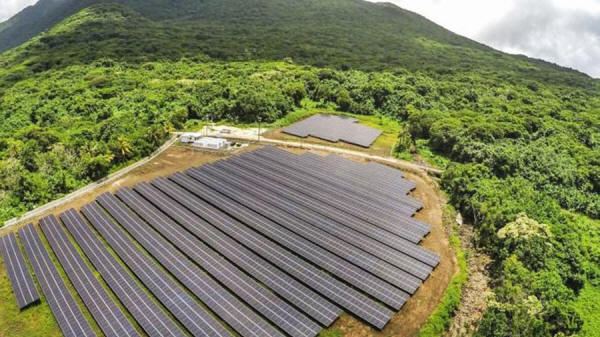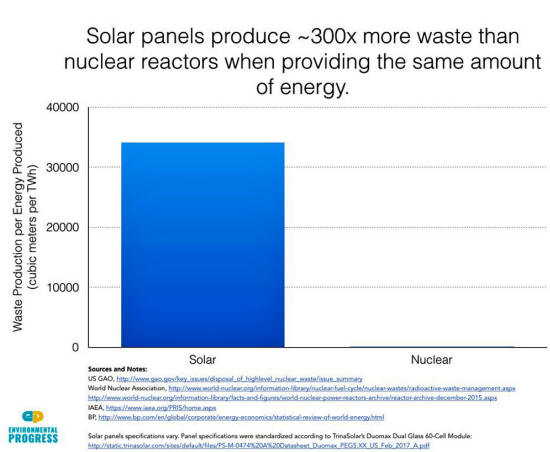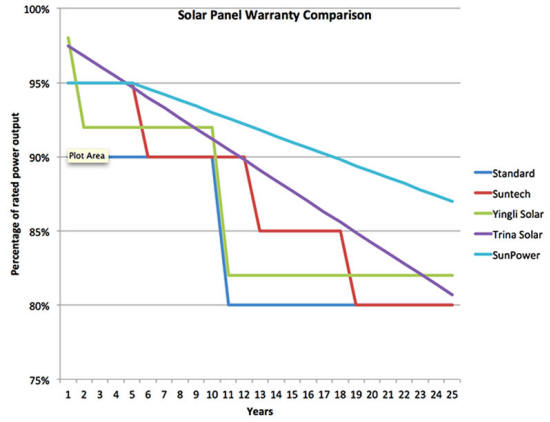|
We've discussed the inherent problems with solar and wind energy already, but one alternative is usually overlooked: Nuclear power is "green" from the environmentalist standpoint as it produces next to no emissions. It's also reliable and inexpensive.
Plus, the technology already is already commercially viable, and scalable. For example, 5% of the world runs on nuclear energy, and France ran on nuclear power for decades with no issues.
There was a time when nuclear energy looked like it would take the world by storm. And honestly, if the world spent even half of the money it spent on solar energy on nuclear power, we could've made the transition to an emissions-free world decades ago.
So why didn't the world just switch to nuclear when the whole green energy trend hit?
Two reasons:
Debunking the "Problems" with Nuclear Power
First, nuclear meltdowns are sensationalized and very, very unlikely, but that didn't stop people from irrationally fearing nuclear meltdowns in their backyard:
And who can blame them?
With the media's sensational coverage of incidents like Three Mile Island, or the Fukushima disaster, it's no wonder people were a little put off about nuclear power.
But that's not the only reason.
The second (and possibly more important) problem is nuclear waste. We can't dispose of it (or so they say). Environmentalists hate that we just toss it in old mines and forget about it.
This is a legitimate concern, but I hope the same crowd that rallies against nuclear in favor of solar power won't miss the irony of these recent findings about toxic waste.
A new report from Environmental Progress shows that solar panels produce an obscene amount of waste, especially relative to the amount of power they produce.
Here are some of the key findings:
Read that again:
The estimates defined toxic waste as the used fuel rods and assemblies from nuclear power plants, and the multitude of heavy metals and environmentally harmful chemicals in the solar panels.
Solar Energy is Not Environmentally Friendly
Granted, solar panel's don't produce radioactive waste, but they do contain hundreds of toxic chemicals and elements that can leech into the earth, poisoning aquifers and water basins.
Solar panels also contain heavy metals like lead, which can damage the nervous system, and carcinogenic metals like chromium and cadmium.
These materials need to be carefully disposed of in a similar manner to household electronic appliances. Even so, all three of the aforementioned metals already have issues in electronic waste dumps, since they can leak into drinking water.
This is just another way that solar energy pollutes the environment - the waste is rarely processed adequately.
On the other hand, nuclear waste is heavily regulated, and stored in drums and monitored, and then encased in glass and stored deep underground in remote locations.
Even though nuclear energy builds its waste management into the cost, it's still much cheaper than the "renewable" alternatives.
Solar, on the other hand, has been surreptitiously touted as "clean energy" even though the waste management can cause environmental disasters.
This is part of the issue:
On the other hand, nuclear waste is treated seriously, and therefore poses far fewer environmental risks.
Aside from the toxins it produces, the fossil fuels burned to build, transport, and dispose of the solar panels severely impacts the carbon footprint of the supposedly "green" energy.
Finally, solar panels die pretty quick: they only have a lifespan of some 25 years.
Furthermore, their efficiency goes down over time, which means you'll need to build more of them just to maintain generation capacity.
Solar energy advocates ignore all of these problems, because for them it's not about doing what's best for the environment. It's a business. It's about making money (by taking yours)...
Green energy is a dead end.
It's time we got serious about our energy policy...
|




